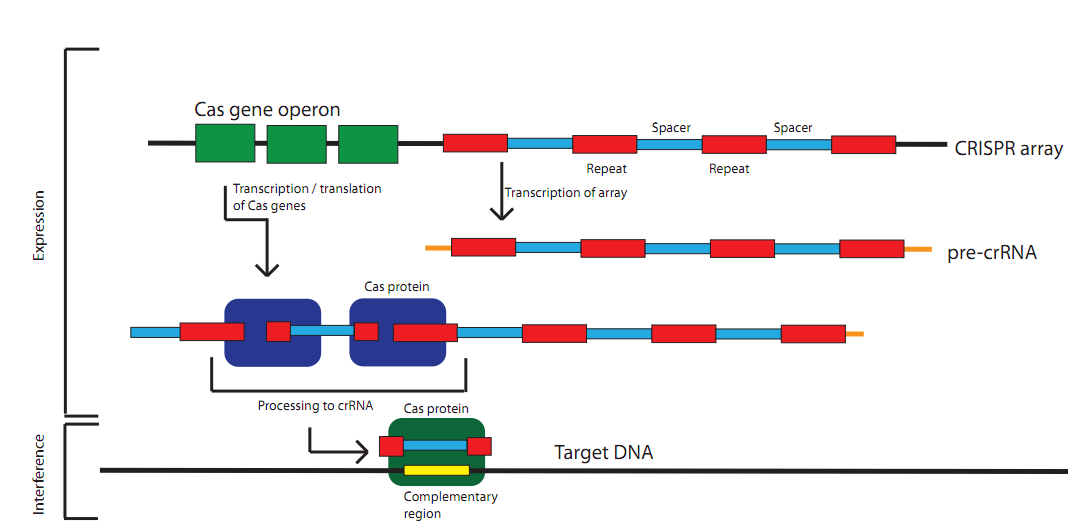Team:Arizona State
From 2011.igem.org
| Line 14: | Line 14: | ||
A basic diagram of the CRISPR pathway. In this image, a CRISPR array is transcribed and used to locate a complementary sequence in the cell for degradation. '''[[Team:Arizona State/Project/CRISPR|More information]]'''. | A basic diagram of the CRISPR pathway. In this image, a CRISPR array is transcribed and used to locate a complementary sequence in the cell for degradation. '''[[Team:Arizona State/Project/CRISPR|More information]]'''. | ||
</center> | </center> | ||
| + | |||
| + | <html> | ||
| + | <html> | ||
| + | <object width="400" height="300"> <param name="flashvars" value="offsite=true&lang=en-us&page_show_url=%2Fphotos%2F68010541%40N05%2Fshow%2F&page_show_back_url=%2Fphotos%2F68010541%40N05%2F&user_id=68010541@N05&jump_to="></param> <param name="movie" value="http://www.flickr.com/apps/slideshow/show.swf?v=107931"></param> <param name="allowFullScreen" value="true"></param><embed type="application/x-shockwave-flash" src="http://www.flickr.com/apps/slideshow/show.swf?v=107931" allowFullScreen="true" flashvars="offsite=true&lang=en-us&page_show_url=%2Fphotos%2F68010541%40N05%2Fshow%2F&page_show_back_url=%2Fphotos%2F68010541%40N05%2F&user_id=68010541@N05&jump_to=" width="400" height="300"></embed></object> | ||
| + | </div> | ||
| + | </html> | ||
| + | </div> | ||
}} | }} | ||
Revision as of 00:16, 29 September 2011
|
|
We are Arizona State University's first iGEM team, working over the summer for the 2011 International Genetically Engineered Machine competition.
AbstractClustered Regularly Interspaced Short Palindromic Repeats (CRISPR) are a genomic feature of many prokaryotic and archaeal species. CRISPR functions as an adaptive immune system, targeting exogenous sequences that match spacers integrated into the genome. Our project focuses on developing a set of tools for synthetic control over the CRISPR pathway. This includes a method for creating polymers of repeat-spacer-repeat units, the development of CRISPR biobricks (CAS genes, leader sequences) for several CRISPR subtypes (E. coli, B. halodurans, and L. innocua), testing these components on plasmids containing GFP, and a software tool to collect and display CRISPR information, as well as select spacers from a particular sequence. Given the relatively recent progress in the scientific understanding of this system, we see the potential for a wide range of biotechnological applications of CRISPR in the future. What is CRISPR?Clustered Regularly Interspaced Short Palindromic Repeats (CRISPR) are a genomic feature of many prokaryotic and archeal species. CRISPR functions as an adaptive immune system. A CRISPR locus consists of a set of CAS (CRISPR associated) genes, a leader, or promoter, sequence, and an array. This array consists of repeating elements along with "spacers". These spacer regions direct the CRISPR machinery to degrade or otherwise inactivate a complementary sequence in the cell.
|
 "
"

